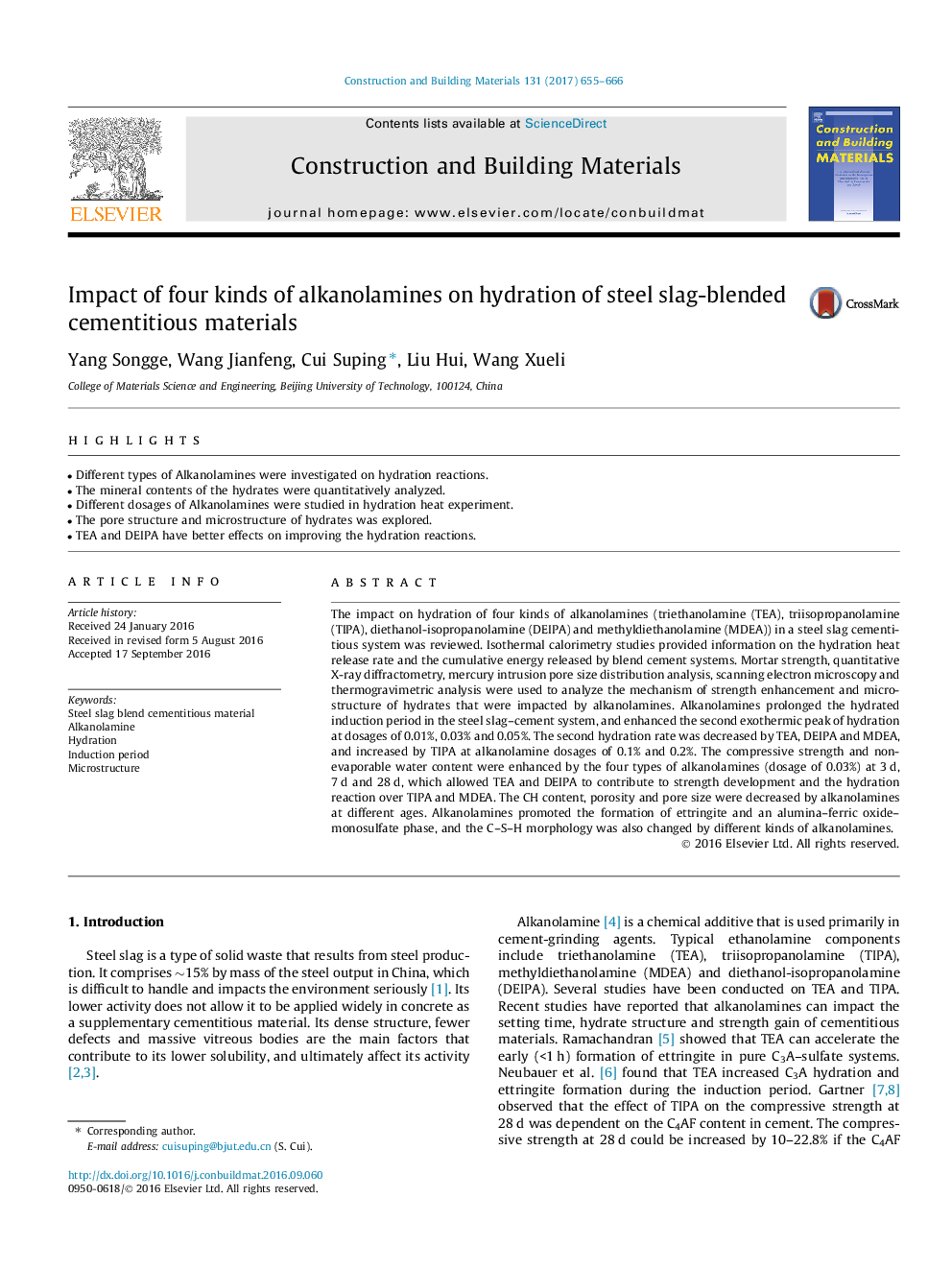| Article ID | Journal | Published Year | Pages | File Type |
|---|---|---|---|---|
| 4913673 | Construction and Building Materials | 2017 | 12 Pages |
Abstract
The impact on hydration of four kinds of alkanolamines (triethanolamine (TEA), triisopropanolamine (TIPA), diethanol-isopropanolamine (DEIPA) and methyldiethanolamine (MDEA)) in a steel slag cementitious system was reviewed. Isothermal calorimetry studies provided information on the hydration heat release rate and the cumulative energy released by blend cement systems. Mortar strength, quantitative X-ray diffractometry, mercury intrusion pore size distribution analysis, scanning electron microscopy and thermogravimetric analysis were used to analyze the mechanism of strength enhancement and micro-structure of hydrates that were impacted by alkanolamines. Alkanolamines prolonged the hydrated induction period in the steel slag-cement system, and enhanced the second exothermic peak of hydration at dosages of 0.01%, 0.03% and 0.05%. The second hydration rate was decreased by TEA, DEIPA and MDEA, and increased by TIPA at alkanolamine dosages of 0.1% and 0.2%. The compressive strength and non-evaporable water content were enhanced by the four types of alkanolamines (dosage of 0.03%) at 3Â d, 7Â d and 28Â d, which allowed TEA and DEIPA to contribute to strength development and the hydration reaction over TIPA and MDEA. The CH content, porosity and pore size were decreased by alkanolamines at different ages. Alkanolamines promoted the formation of ettringite and an alumina-ferric oxide-monosulfate phase, and the C-S-H morphology was also changed by different kinds of alkanolamines.
Related Topics
Physical Sciences and Engineering
Engineering
Civil and Structural Engineering
Authors
Yang Songge, Wang Jianfeng, Cui Suping, Liu Hui, Wang Xueli,
